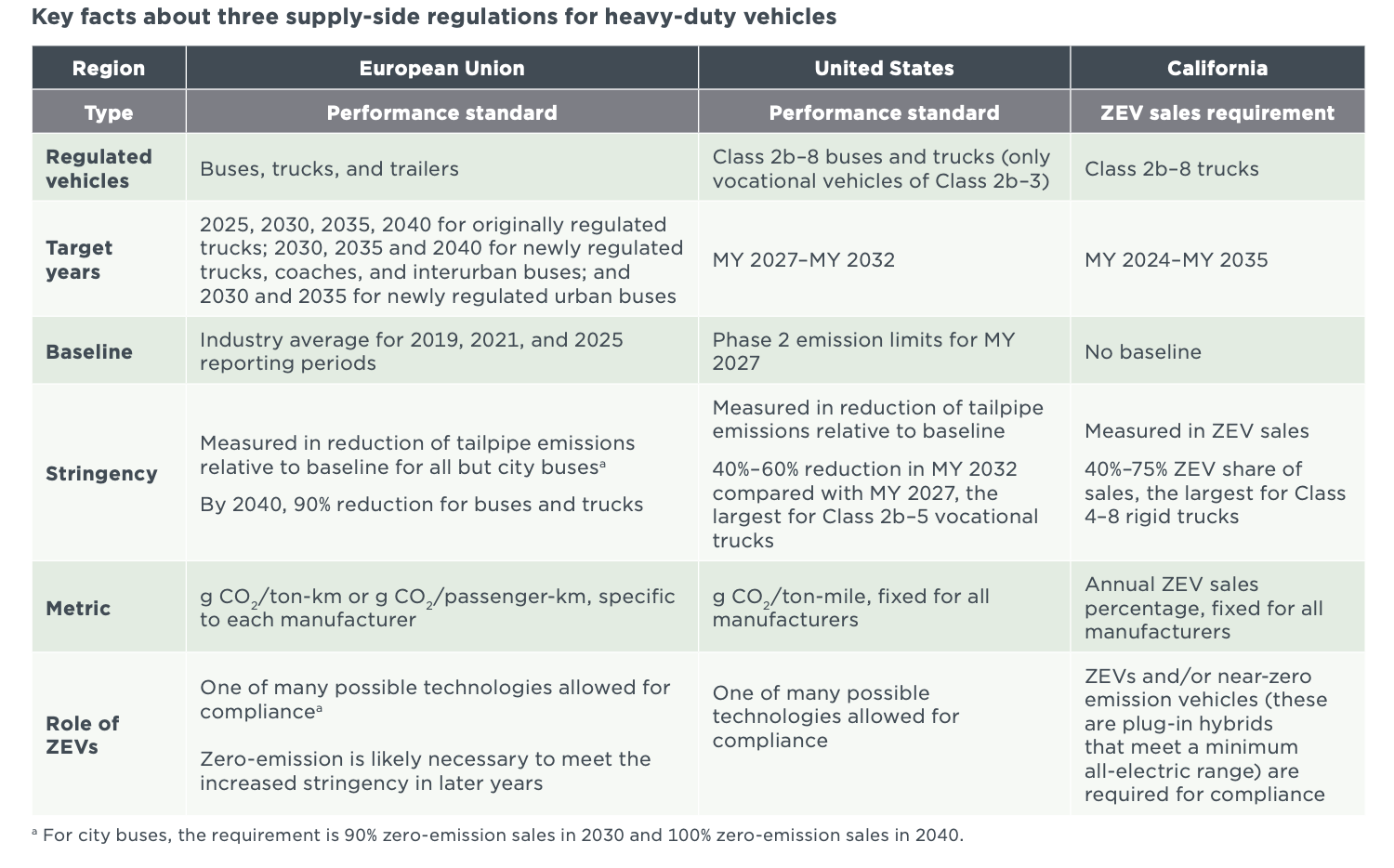Heavy-duty vehicles (HDVs) are the second-largest source of greenhouse gas emissions in the transport sector and the leading contributors to air pollutants like particulate matter and nitrogen oxide.
As zero-emission HDV technology matures, supply-side regulations (SSRs) have emerged as a key policy tool to mitigate climate and air quality impacts. A recent ICCT research brief examines three major SSRs—California’s Advanced Clean Trucks regulation, the U.S. Phase 3 HDV GHG emission standards, and the European Union’s HDV CO2 standards—and explores how they support the transition to zero-emission vehicles (ZEVs).
SSRs offer three key advantages in accelerating ZEV adoption. First, they create market-wide certainty for manufacturers. Second, they expand the availability and diversity of zero-emission models, stimulating consumer demand. Third, they are easier to administer and enforce than consumer-focused programs due to the smaller number of manufacturers.
Successful SSR implementation follows best practices such as aligning targets with energy and economic goals, using fleet-average compliance mechanisms, establishing credit banking and trading systems, and enforcing robust monitoring and reporting frameworks.
The most effective regulations integrate climate, clean air, and energy objectives while setting interim targets to build technological expertise and economies of scale. Fleet-average compliance mechanisms lower costs and drive industry innovation, with weighting factors ensuring balanced compliance across HDV types.
Well-structured credit systems encourage early adoption while preventing excessive credit accumulation through time limits. Public disclosure of compliance data fosters confidence in regulations, particularly during technology shifts.
Source: ICCT

